The real world

Despite Robin Williams’ astounding performance, The Timekeeper was doomed to suffer from a common ailment of media-based attractions: they tend to be “one-and-dones,” with diminishing crowds year after year… If you’ve seen it once, you don’t need to see it again, right? While the switch from travelogue to story might’ve extended the Circle-Vision’s lifetime, a decade later, The Timekeeper was no longer a draw.
In April 2001 – still in the midst of Eisner’s decade-long budget crunch – executives opted to switch The Timekeeper to the dreaded “seasonal” operation status meaning that it would only open during the park’s busiest periods when extra capacity was needed. When it was closed, the theater’s railings were repurposed as queue switchbacks leading to character meet-and-greets, with the Timekeeper Audio-Animatronic simply switched off in plain sight… a sad state for a relatively new and original experience.

Then, on September 11, 2001, the United States was attacked and the World Trade Center’s Twin Towers in New York City were destroyed by hijacked airplanes. Air travel and the entire tourism industry slammed to a halt overnight. Attendance plummeted.
Budget-conscious executives at Walt Disney World announced that in Tomorrowland alone, both The Timekeeper and the Modern Marvel: Carousel of Progress would remain “seasonal” attractions until further notice.
The Timekeeper switched on and off in Magic Kingdom’s attraction lineup for five more years… but since the attraction’s flyover of New York City included the Twin Towers in its skyline, the LED “current year” display at the Timekeeper’s controls was permanently set to 2000 – before the attack had occured. Still, the Towers’ presence was a sobering reminder of a national tragedy, and was outright awkward in the context of “time travel.”
Tokyo Disneyland’s Visionarium was the first to fall, closing September 1, 2002 to make way for Buzz Lightyear Astro Blasters. The writing was on the wall…
Undoing Discoveryland
Disneyland Paris’ Visionarium closed two years later – September 5, 2004 – to make way for…
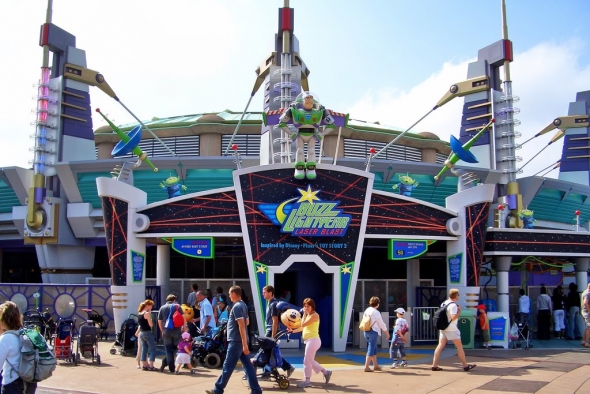
Buzz Lightyear Laser Blast. Masking the golden Circle-Vision theater in your standard Tomorrowland silver (with toy stickers and plastic appliques), the loss of Discoveryland’s custom-made European journey was, of course, just the begnning. (The good news is that you can still find Nine-Eye inside, hovering – hidden – behind the blacklight ride’s oversized orange Box-o-Bot.)

It goes without saying that – despite its lofty, intellectual, and literary origins – a similar fate befell Discoveryland. After it lost Le Visionarium in 2004, the land quickly descended into typical Tomorrowland tropes.

Just one year later in 2005, that uniquely-fantasy-infused Lost Legend: Space Mountain – De la Terre à la Lune closed to become Space Mountain: Mission 2, essentially giving the ride the same sci-fi ornamentation and soundtrack as all the other Space Mountains, just in a gilded, golden shell. Today, it houses a permanent Star Wars Hyperspace Mountain overlay, which couldn’t be a more unusual fit for a golden, literary seaport designed by Jules Verne and H.G. Wells.
Finally, Magic Kingdom’s Timekeeper closed two years after that – February 26, 2006. Just as the ultra-original, cult-classic Alien Encounter has become the Declassified Disaster: Stitch’s Great Escape in 2004, The Timekeeper’s 2006 closure would coincide with a character invasion.
Undoing Tomorrowland
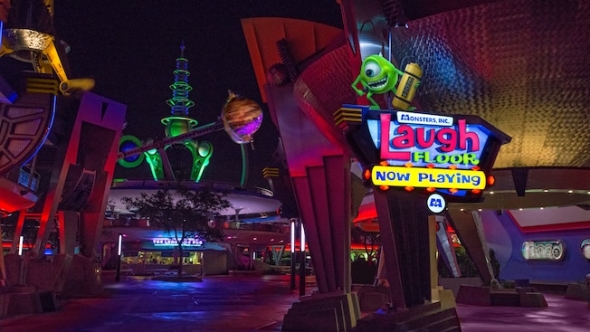
In April 2007, Magic Kingdom’s Circle-Vision theater was decommissioned for good, renovated entirely to become Monsters Inc. Laugh Floor. The new attraction – still a theater show – invites guests into a Monstropolis comedy club where guest-submitted jokes are presented by live, digitally-puppeted characters from the world of Pixar’s Monsters Inc. to fill city-powering laugh canisters.
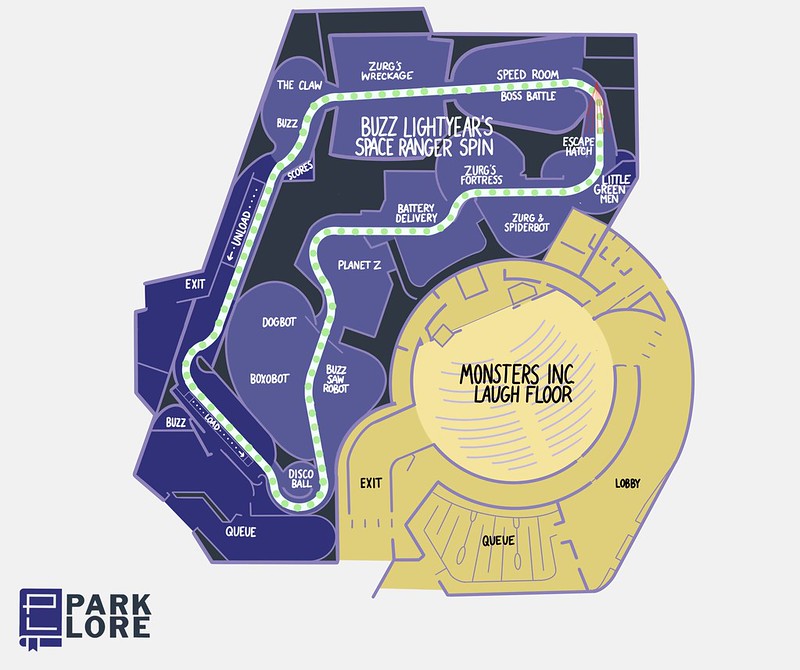
(Check out how Monsters Inc. re-uses the Timekeeper’s Circle-Vision set-up – and how the Lost Legend: If You Had Wings / Buzz Lightyear’s Space Ranger Spin was built around the theater – in our hand-drawn ride layout above.)
As you’d expect, any connection to the carefully crafted exterior and the once-pervasive Tomorrowland story was squashed. The Tomorrowland Transit Authority reverted to its “classic” name – the Peoplemover – and stopped referring to Tomorrowland’s attractions by their “real-life” locations like the Convention Center and Science Museum because they didn’t exist anymore. They’d been replaced with cartoons.
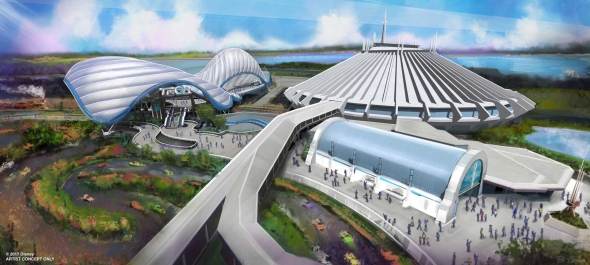
Frankly, the much-anticipated U.S. debut of Modern Marvel: TRON Lightcycle Power Run muddied the creative waters of Tomorrowland even further, meshing the pulpy, sci-fi city entry with the land’s largely untouched ’70s-stylized rear, and now the ultra-modern, sleek, glass “Upload Circuit” of TRON flowing behind it all.
Forever future?
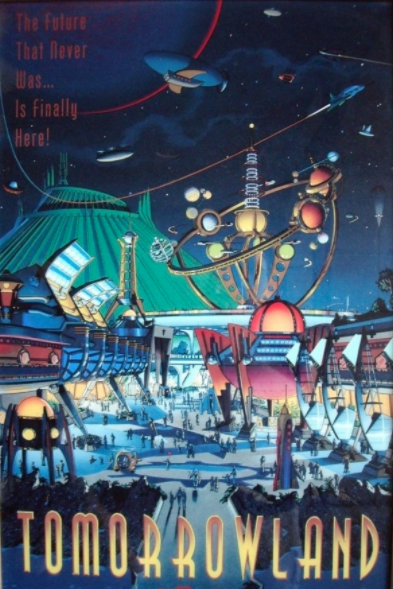
Both 1992’s Discoveryland and 1994’s New Tomorrowland were brave concepts that have both been overrun with intellectual properties, breaking any of the world-building and continuity Imagineers smartly strived for. Does that make the concepts failures? Maybe.
In any case, it certainly answers the call Imagineers had set forth in the 1990s. Can you make a timeless Tomorrowland?Apparently… no. Imagineers wanted New Tomorrowland and Discoveryland to never need a facelift by designing worlds that aren’t rooted in real predictions of things to come, but anchored to timeless, literary, pop culture concepts that would never come true.
As we gaze across those “timeless” Tomorrowlands today, we see what became of them.
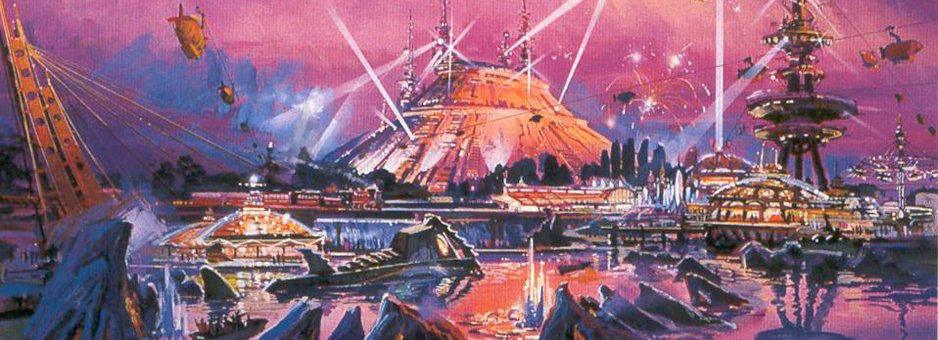
Today, guests visiting Disney’s lands of the future in Paris, Orlando, and Anaheim can…
- climb into trains marked with golden cogs and faux-velvet seats to be loaded into a golden cannon and then launched into… the Star Wars universe.
- navigate through a bronze port of the future as envisioned by great European thinkers and literary legends like Jules Verne to… shrink to the size of an action figure to rescue stolen double-A batteries.
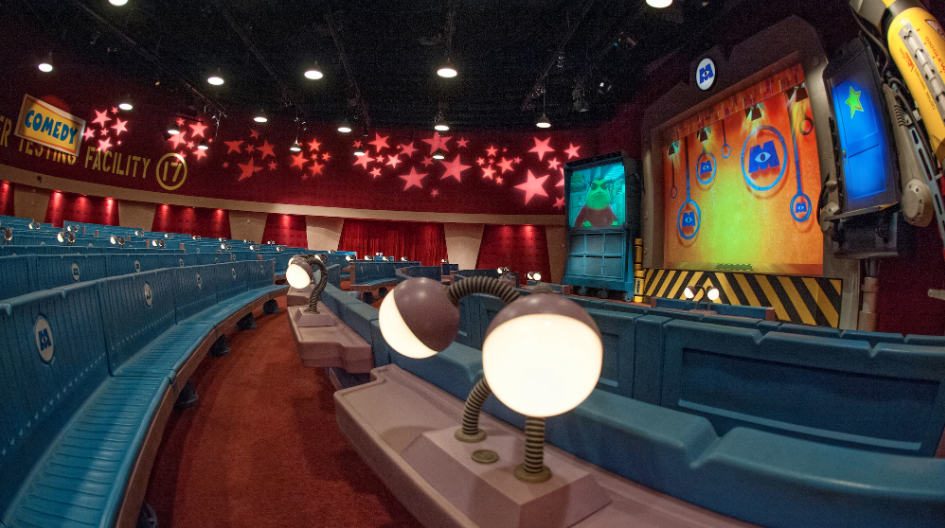
- enter into an extraterrestrial city born of 1930s pulp action heroes and comic books… to visit a nightclub run by laugh-out-loud characters from Monsters Inc.
- board unimaginable submarines to cruise through a meticulous and mesmerizing lagoon, descending into… the story of Finding Nemo.
Fans would riot if such sloppy storytelling was allowed in Frontierland or Adventureland or Main Street, but in Tomorrowland, we collectively allow cartoons and characters to stand-in for substance and smarts. Whether that’s wrong or right is left to guests, Imagineers, and executives to debate.
A legend lost in time
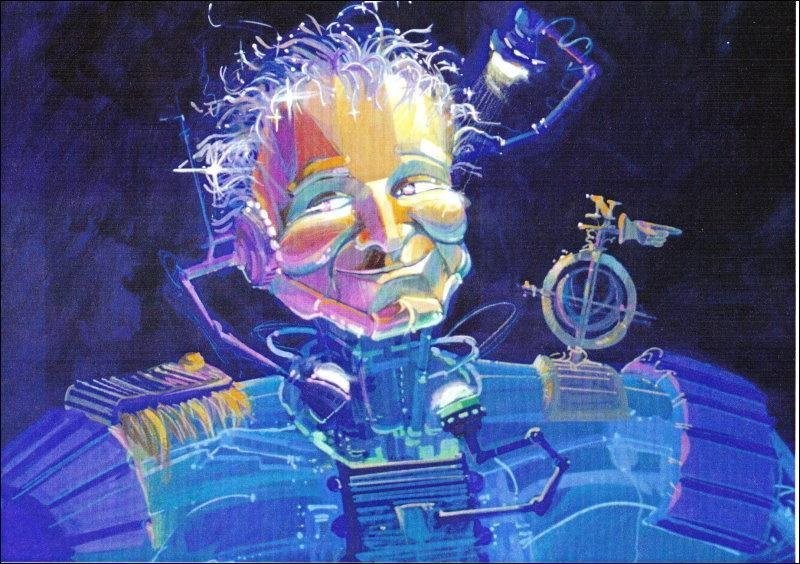
But one thing we know for sure? The Timekeeper was an icon of another time at Disney… a time when brilliant original ideas weren’t just tolerated, they were celebrated. The Timekeeper and Nine-Eye were an unusual experiment in turning 1950s technology into a world-building, headlining attraction to set a new standard.
We argue that it suceeded. The Timekeeper felt at once nostalgic, modern, and forward-thinking, and the same three qualities can’t be said of too many modern projects. From Robin Williams and Rhea Perlman’s spectacular star power in the American version to the celebrated story of Discoveryland and its European influences in Paris, The Timekeeper was a classic that should be remembered by Imagineering fans the world over.
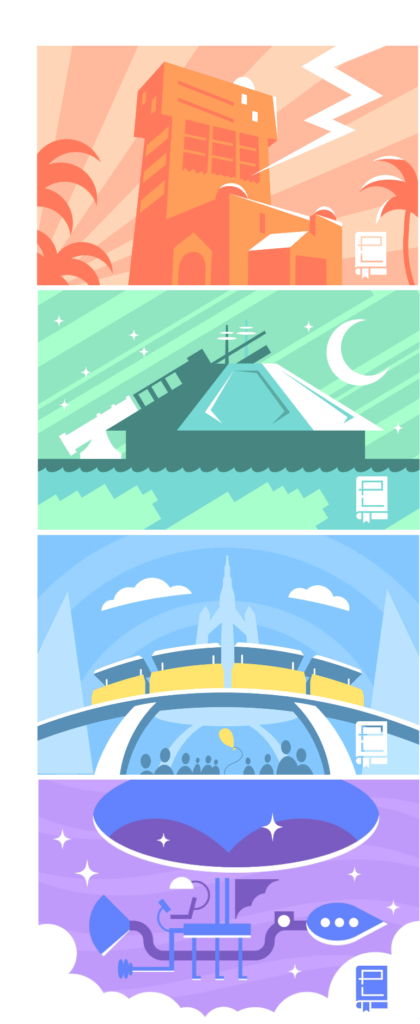
Thank you so much for reading. Now, it’s your turn to join the story. If you enjoy spending time falling down the “rabbit hole” of Park Lore’s in-depth, ad-free, member-supported stories, consider becoming a Member for as little as $2 / month.
Members can unlock rare concept art in every tale, reveal attraction audio streams in select stories, gain access to over a hundred exclusive articles in our quick-read Extra Features and in-depth Special Features collections, gain exclusive podcast extras, and receive an annual member card and merch in the mail! (Plus, y’know, supporting research-based, ad-free, clickbait-free, in-depth theme park writing!)
If you enjoyed our detailed look at The Timekeeper, be sure to make the jump to our Lost Legends Library where you’ll find dozens more must-read features to explore. Then, use the comments below to share your memories. Did you experience The Timekeeper? Was it a brilliant re-use of an age-old technology that showed just how important such C-Ticket asides are in building larger-than-life worlds inside of Disney Parks? Or was The Timekeeper dated, dull, and doomed? We can’t wait to read your thoughts.



i miss timekeeper it was awesome